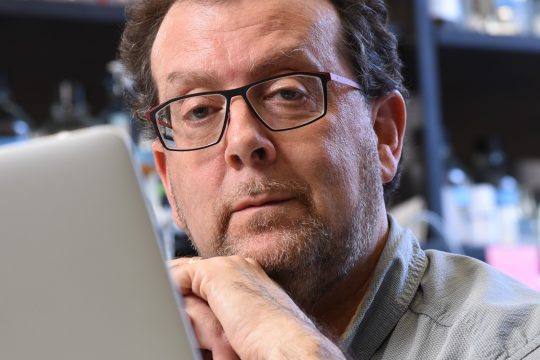Single cell gene molecular profiling has demonstrated that cell classification requires more than a simple collection of markers. Current approaches do not account for the dynamic nature of cell states and inherent variation in cell types. This is especially...
Understanding the brain using evolution, viruses, and barcode sequencing. Our research aims to understand the structure and function of the brain. To do so, we take a comparative approach and develop molecular, viral, and sequencing technologies to measure neuronal...
My laboratory has taken a multidisciplinary approach to understand the cellular and molecular mechanisms of different types of somatosensations including pain and itch, which are initiated and mediated by primary sensory neurons in dorsal root ganglia (DRG). We identified...
The goal of my research program is to answer a fundamental biological question: how is the genome properly interpreted to coordinate the diversity of cell types observed during neuronal development? We are focused on the acquisition of specific cellular...
Our research is focused on understanding how neuronal connectivity is established during development. Our work investigates the function of extrinsic guidance cues and their receptors on axonal guidance, dendritic morphology, and synapse formation and function. For several years we...
The vertebrate central nervous system (CNS) is an amazingly complex structure composed of distinct subtypes of neurons and glia. Our lab aims to identify the molecular mechanisms that control the generation of the major cell types of the vertebrate...
Our research takes a bottom-up approach to understanding how the neural circuits of this massively interconnected network of neurons are functionally organized and how dysfunction in these circuits contributes to neurodegenerative diseases like amyotrophic lateral sclerosis and neuropsychiatric disorders...
Auditory hair cells, located in the inner ear cochlea are critical for our ability to detect sound. In mammals, neural innervated hair cells come in two flavors: inner hair cells, which are our primary mechanoreceptor and relay sound information...
The focus of our research is to identify mechanisms of protein synthesis-dependent neuronal plasticity. The approach uses differential cloning techniques to identify mRNAs that are rapidly induced in neurons by synaptic activity. Classical studies established that rapid, de novo...
Our laboratory is interested in the area of sensory transduction: specifically visual and olfactory transductions, which are the processes by which the senses of vision and olfaction are initiated. These two processes have interesting similarities and differences. Vision can...










